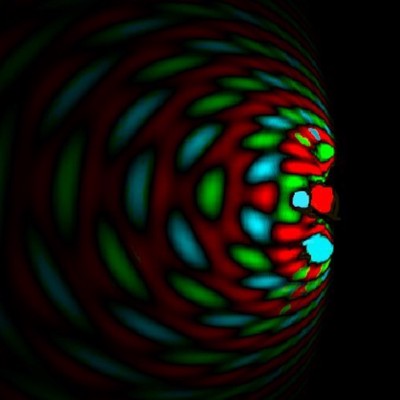|
This page provides numerical table files for the
computation of CT18 leading order (LO),
next-to-leading order (NLO) and
next-to-next-to-leading order (NNLO) parton distribution
functions. They can be interpolated with the help
of a
standalone Fortran interface
and
demonstration program
, as well as the tables with interpolated values of the
QCD coupling alpha_s and PDFs.
A simple C++ interface for the CTEQ-TEA PDFs with
CTEQ6.6 or later can be found
here.
Parametrizations of CT18 PDFs are also available from the LHAPDF library, version 6. For backward compatibility, we also provide CT18 grids in the LHAPDF5 format. Note that, in order to call all 59 CT18 error PDF sets with LHAPDF 5.9.X, you must recompile LHAPDF with an updated CT wrapper. ATTENTION: The format of the PDF table files (with the extension .pds) and the Fortran interface were revised in 2012 to provide interpolation of the energy dependence of the QCD running coupling alpha_s using a table of alpha_s values stored inside the .pds file. The pre-2012 PDF table files are partly incompatible with the new format. They can be interpolated by the 2012 interface, but without computing alpha_s. UPDATE, August 2023: For some general-purpose CT18 PDF sets, this website now provides .pds and LHAPDF grids with denser grids in x and Q. The purpose of these grids is to realize more accurate interpolation in most precise calculations, such as the tests of N3LO radiative contributions and predictions at very large momentum fractions x. Apart from that, the 2023 grids are completely equivalent to their 2019 versions included in the LHAPDF library, and hence the 2019 and 2023 grids can be used on equal footing in phenomenological simulations. |
Available PDF sets
See the header of the Fortran interface for further explanations.| PDF set | Description and links to the table files | Authors or main contact | References | Date | Additional resources |
| CT18 NNLO |
* 2023 enhanced precision grids:
|
T.-J. Hou et al.
|
arXiv:1912.10053 | 12/2019 08/2023 |
Plots of L2 sensitivities
Additional figures |
| CT18 NLO |
[Also on lhapdf.hepforge.org] *General-purpose NLO central set + 58 eigenvector sets ( LHAPDF6, LHAPDF5 ) * PDF sets with a varied strong coupling alpha_s(M_Z) in the ranges 0.116-0.120 (LHAPDF6, pds) and 0.110-0.124 (LHAPDF6, pds). The recommended 90% C.L. uncertainty estimate is 0.116 - 0.120. * LHAPDF6 grids with 3, 4, 6 active flavors; same, in the pds format. |
T.-J. Hou et al. |
arXiv:1912.10053 |
12/2019 08/2023 |
Additional figures
|
| CT18Z NNLO |
* 2023 enhanced precision grids:
|
T.-J. Hou et al.
|
arXiv:1912.10053 |
12/2019 08/2023 |
Plots of L2 sensitivities
Additional figures |
| CT18Z NLO |
[Also on lhapdf.hepforge.org] *General-purpose NLO central set + 58 eigenvector sets ( LHAPDF6, LHAPDF5 ) * PDF sets with a varied strong coupling alpha_s(M_Z) in the ranges 0.116-0.120 (LHAPDF6, pds) and 0.110-0.124 (LHAPDF6, pds). The recommended 90% C.L. uncertainty estimate is 0.116 - 0.120. * LHAPDF6 grids with 3, 4, 6 active flavors; same, in the pds format. |
T.-J. Hou et al. |
arXiv:1912.10053 |
12/2019 08/2023 |
Additional figures
|
| CT18A NNLO |
* 2023 enhanced precision grids:
|
T.-J. Hou et al.
|
arXiv:1912.10053 |
12/2019 08/2023 |
Additional figures |
| CT18A NLO |
[Also on lhapdf.hepforge.org] *General-purpose NLO central set + 58 eigenvector sets ( LHAPDF6, LHAPDF5 ) * PDF sets with a varied strong coupling alpha_s(M_Z) in the ranges 0.116-0.120 (LHAPDF6, pds) and 0.110-0.124 (LHAPDF6, pds). |
T.-J. Hou et al. |
arXiv:1912.10053 |
12/2019 08/2023 |
Additional figures
|
| CT18X NNLO |
* 2023 enhanced precision grids:
|
T.-J. Hou et al.
|
arXiv:1912.10053
|
12/2019 08/2023 |
Additional figures |
| CT18X NLO |
[Also on lhapdf.hepforge.org] *General-purpose NLO central set + 58 eigenvector sets ( LHAPDF6, LHAPDF5 ) * PDF sets with a varied strong coupling alpha_s(M_Z) in the ranges 0.116-0.120 (LHAPDF6, pds) and 0.110-0.124 (LHAPDF6, pds). |
T.-J. Hou et al. |
arXiv:1912.10053
|
12/2019 08/2023 |
Additional figures
|
| CT18qed 2023 NNLO |
[Also on lhapdf.hepforge.org] * CT18qed photon PDFs with NNLO QCD and NLO QED evolution. 75 member sets. mem=0: central set, 1-58: PDF eigenvector sets, 59-75: error sets for elastic, CB21, HERMES, RL/T, HT, Q2PDF, MHO, and HT uncertainties CT18qed proton (total, elastic, inelastic) CT18qed neutron (total, elastic, inelastic) |
K. Xie, B. Zhou, T.J. Hobbs |
arXiv:2305.10497 |
05/2023 |
|
| CT18qed 2021 (deprecated) |
2021 QED NNLO parameterizations:
*General-purpose: 1 central + 58 Hessian sets + 2*8 low-Q2 sets (LHAPDF6). Hessian sets are defined as 90% C.L., and low-Q2 sets are symmetrized and scaled to 90% C.L.
CT18qed: Photon PDF is initialized at mu0=3 GeV (pQCD matching scale) with LUX formula and evolved to higher scales. CT18qed1GeV: Photon PDF is initialized at mu0=1.3 GeV (CT18 starting scale) with LUX formula and evolved to higher scales. CT18lux: Photon PDF is calculated with the LUXqed formalism at all scales. |
K. Xie et al. |
arXiv:2106.10299 |
06/2021 |
|
| CT18FC |
[Also on lhapdf.hepforge.org] CT18FC NNLO fitted charm series; 4 model scenarios, each with 3 sets for &Delta&chi2=0, 10, and 30; mem=0-2: CT18 BHPS3; mem=3-5: CT18 MBMC; mem=6-8: CT18 MCME; mem=9-11: CT18X BHPS3 (LHAPDF6) |
M. Guzzi, T. J. Hobbs, K. Xie, J. Huston, P. Nadolsky, C.-P. Yuan |
arXiv:2211.01387 |
11/2022 |
|
| CT18LO |
[Also on lhapdf.hepforge.org] *General-purpose 1 central ( LHAPDF6 ) |
M. Yan et al. |
arXiv:2205.00137 |
05/2022 |
Additional Figures |
Families of PDFs: CTEQ6-CTEQ6.6, CT10, CT14.
In the S-ACOT-MPS project, we collect all the subtracted PDFs designed for the heavy-flavor hadroproduction.
Web support:
Tie-Jiun Hou (tjhou at msu.edu)
Pavel Nadolsky (nadolsky at smu.edu)
Keping Xie (xiekeping at pitt.edu)
C.-P. Yuan (yuanch at msu.edu)
This website is partially supported by the U.S. Department of Energy under Grants DE-SC0010129, DE-FG02-95ER40896 and by the U.S. National Science Foundation under Grants PHY-1719914, PHY-2013791, PHY-1820760, PHY-1820818.
